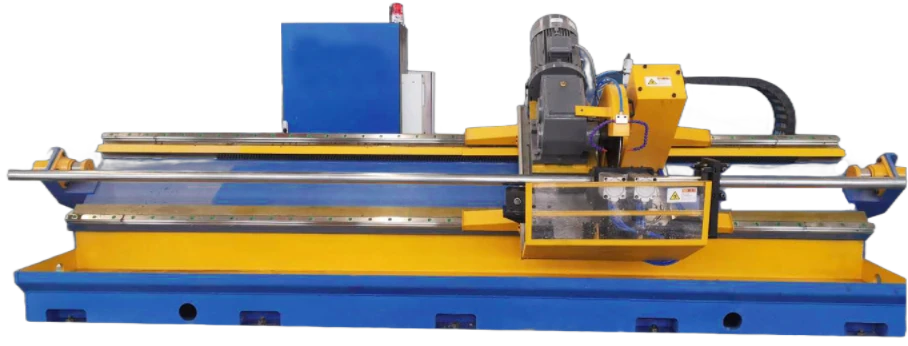machine straightening
Understanding Machine Straightening A Comprehensive Overview
Machine straightening, often referred to as the process of correcting distortions in various types of materials, is a fundamental practice in industries ranging from manufacturing to construction. This technique is essential in ensuring that components and structures meet precise specifications and performance standards. The importance of machine straightening cannot be overstated, as it plays a crucial role in maintaining the integrity and functionality of various mechanical systems.
The Process of Machine Straightening
At its core, machine straightening involves the manipulation of materials to remove bends, twists, or other forms of deformation. This process typically employs specialized machines designed to exert pressure on the material, allowing it to return to its intended shape. The machines used can vary significantly based on the nature of the material being straightened and the extent of the distortion.
The most common types of machines used in the straightening process include rolls, presses, and jigs. Roll straighteners are frequently used for long, cylindrical objects, while hydraulic presses are exemplary for heavier and thicker materials. Jigs, on the other hand, are often utilized for smaller and intricate components, ensuring that they maintain accuracy while being maneuvered.
Applications Across Industries
Machine straightening is a versatile process with applications across multiple sectors. In the automotive industry, for example, straightening is crucial in the production of chassis and other structural components. Ensuring that these parts are straight is vital for safety, performance, and aesthetics. Any deviations can lead to issues such as uneven tire wear, compromised structural integrity, and subpar handling characteristics.
Similarly, in the construction industry, straightening can be applied to beams, columns, and other structural elements. Properly straightened materials are essential for the stability and durability of buildings and infrastructure. If structural elements are not straight, it can lead to serious problems such as settling or even catastrophic structural failures.
machine straightening

Moreover, machine straightening is important in the manufacturing of precision instruments and machinery. Equipment used in sectors like aerospace and medical devices demands high tolerances, where even a slight distortion can lead to failure or inaccuracies in operation. Therefore, machine straightening helps meet these stringent quality standards.
Techniques and Technologies
Various techniques and technologies have been developed to enhance the machine straightening process. Traditional methods rely heavily on manual adjustment and human oversight, but advancements in technology have introduced automated systems and computerized controls that improve accuracy and efficiency.
One such advancement is the incorporation of laser technology, which allows for precise measurement and real-time adjustments during the straightening process. This ensures that the material is continuously monitored, significantly reducing the risk of errors and enhancing the overall quality of the final product.
Additionally, the development of advanced materials has led to the need for specialized straightening techniques. For example, high-strength steels and alloys may require different approaches compared to more traditional materials like aluminum or plastic. Understanding the unique properties of each material is crucial for determining the appropriate straightening technique.
Conclusion
Machine straightening is an indispensable process that underpins many industries and applications. By ensuring that materials and components are devoid of distortions, machine straightening contributes to the overall quality, safety, and performance of a wide range of products. As technology continues to advance, the methods and machinery used for straightening will only improve, further enhancing efficiency and precision in manufacturing and construction.
In conclusion, as industries evolve and demand higher standards, the significance of machine straightening will only continue to grow. Companies that invest in quality straightening processes will benefit from increased reliability and performance of their products, ultimately leading to greater customer satisfaction and success in the competitive marketplace. Understanding and implementing effective machine straightening techniques is not just about correcting physical deformities; it’s about committing to excellence in engineering and manufacturing practices.
-
High Frequency Straight Seam Welded Pipe Production Line-BzZhou Xinghua Machinery Equipment Manufacturing Co., LTD.|line pipe steel&welded gas pipeNewsJul.30,2025
-
High Frequency Straight Seam Welded Pipe Production Line-BzZhou Xinghua Machinery Equipment Manufacturing Co., LTD.|High Precision&Automated SolutionsNewsJul.30,2025
-
High Frequency Straight Seam Welded Pipe Production Line - BzZhou Xinghua Machinery Equipment Manufacturing Co., Ltd.NewsJul.30,2025
-
High Frequency Straight Seam Welded Pipe Production Line-BzZhou Xinghua Machinery Equipment Manufacturing Co., LTD.|Precision Welding, High EfficiencyNewsJul.30,2025
-
High Frequency Straight Seam Welded Pipe Production Line|BzZhou Xinghua|Precision Welding&EfficiencyNewsJul.30,2025
-
High Frequency Straight Seam Welded Pipe Production Line - BzZhou Xinghua|Precision Engineering&EfficiencyNewsJul.30,2025


